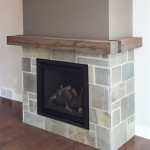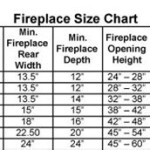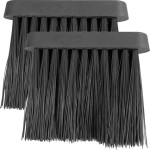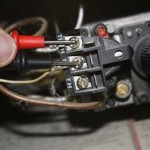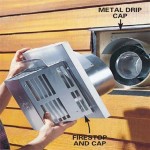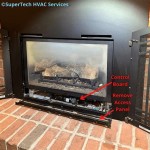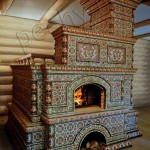How To Mount a TV Into a Brick Fireplace
Mounting a television above a brick fireplace can create a visually appealing focal point in a room. However, this project presents unique challenges compared to mounting on drywall or standard walls. The hardness and uneven surface of brick require specific tools, materials, and techniques to ensure a secure and safe installation. This article provides a comprehensive guide to mounting a TV into a brick fireplace, covering planning, preparation, installation, and considerations for long-term maintenance.
Planning and Preparation: Assessing Suitability and Gathering Materials
Before beginning any physical work, careful planning is crucial. The initial step involves determining if the brick fireplace is suitable for supporting a television mount and the weight of the television itself. Brick fireplaces vary in construction; some are solid masonry, while others might have decorative facades that are less structurally sound. It is important to understand the type of brick and mortar used in the fireplace's construction.
The size and weight of the television are important considerations. A lightweight television poses fewer challenges than a larger, heavier model. Check the television's specifications for its weight and dimensions to ensure compatibility with the mounting hardware and the brick's load-bearing capacity. A general rule is to consult a professional if there is any doubt about the fireplace's structural integrity or ability to support the intended weight.
The location of the television is also a critical factor. Viewing height significantly impacts comfort. Ideally, the center of the television screen should be at eye level when seated. Measure the seating height in the room and calculate the appropriate mounting height accordingly. The fireplace mantle can affect the viewing angle. If the mantle protrudes significantly, it may obstruct the lower portion of the screen. In some instances, the mantle can be removed or reduced in size, but this should be done cautiously and with consideration for the fireplace's overall design.
Heat exposure is another concern. Fireplaces generate heat, which can potentially damage sensitive electronic components. The heat rises from the fireplace opening. Ensure that the television is mounted high enough above the firebox to avoid direct heat exposure during fireplace operation. Consider the frequency and duration of fireplace use. If the fireplace is frequently used, the television may require additional heat shielding or a higher mounting position.
Once the suitability of the fireplace and the desired mounting location have been determined, gather the necessary tools and materials. This includes:
- A Heavy-Duty Television Mount: Select a mount specifically designed for brick or masonry. These mounts typically have a larger mounting plate and use heavy-duty anchors. Consider a tilting mount for optimal viewing angles.
- A Rotary Hammer Drill: A standard drill is often insufficient for drilling into brick. A rotary hammer drill provides both rotational and percussive force, making it more effective for creating precise and clean holes in brick.
- Masonry Drill Bits: Use high-quality carbide-tipped masonry drill bits appropriate for the size of the anchors that will be used. Have a set of bits available to accommodate different hole sizes.
- Heavy-Duty Masonry Anchors: These anchors are designed to expand and grip securely within the brick or mortar. Sleeve anchors, wedge anchors, or concrete screws are common choices. Select anchors with a load-bearing capacity that exceeds the weight of the television and the mount.
- Level: A long level (at least 4 feet) is essential for ensuring that the mount is perfectly horizontal.
- Stud Finder (Optional): While not strictly necessary for brick, a stud finder can be helpful for identifying the location of internal framing if the fireplace has a wood or metal support structure behind the brick.
- Measuring Tape: For accurate measurements of the television, mount, and fireplace.
- Pencil or Marker: For marking drilling locations.
- Safety Glasses: To protect eyes from flying debris during drilling.
- Dust Mask: To prevent inhalation of brick dust.
- Gloves: For hand protection.
- Wrench or Socket Set: For tightening the anchors.
- Vacuum Cleaner: To clean up dust and debris after drilling.
- Cable Management System: To conceal and organize power and HDMI cables. Options include cable concealer kits, in-wall cable management, or cable ties.
Before starting the installation, turn off the power to the circuit breaker that services the area where you will be working.
Installation: Drilling, Anchoring, and Mounting
With the tools and materials assembled, the installation process can begin. The first step is to accurately mark the desired mounting location on the brick fireplace. Use a level to ensure that the mount will be perfectly horizontal. Position the mounting plate against the brick and use a pencil or marker to mark the drilling locations through the mounting plate's holes. Double-check all measurements to ensure accuracy. Incorrectly placed holes can compromise the stability of the mount. If possible, aim to drill into the brick itself rather than the mortar joints. Brick provides a more secure hold than mortar, which can be more brittle.
Using the rotary hammer drill with the appropriate-sized masonry drill bit, carefully drill pilot holes at the marked locations. Hold the drill firmly and apply consistent pressure. Avoid excessive force, which can damage the brick or the drill bit. Drill to the depth specified by the anchor manufacturer for optimal holding power. After drilling each hole, use a vacuum cleaner to remove the dust and debris from the hole. This helps ensure that the anchors will seat properly.
Insert the chosen masonry anchors into the pilot holes. Follow the manufacturer's instructions for proper anchor installation. Sleeve anchors and wedge anchors typically require hammering them into the holes until they are flush with the surface. Concrete screws are screwed directly into the holes. Once the anchors are in place, tighten them securely using a wrench or socket set. The goal is to expand the anchors fully within the brick, creating a strong and stable connection. Avoid overtightening, which can strip the threads or damage the anchors.
Attach the mounting plate to the anchors using the appropriate screws or bolts. Ensure that the mounting plate is securely fastened and level. Double-check the stability of the mount by applying gentle pressure to different points. Any movement or wobbling indicates that the anchors may not be properly seated or that the mounting plate is not securely attached. If necessary, remove the mounting plate and reinstall the anchors or try different anchor types.
Once the mounting plate is secure, attach the television brackets to the back of the television according to the manufacturer's instructions. Align the brackets with the VESA mounting holes on the television and tighten the screws securely. Carefully lift the television and attach it to the mounting plate, following the instructions provided with the television mount. Most mounts have a locking mechanism or screws to secure the television to the plate. Ensure that the television is securely attached and cannot be easily dislodged.
After the television is mounted, manage the cables. Run the power cable and HDMI cables through the chosen cable management system to conceal them and prevent them from dangling. Options include running the cables through a cable concealer kit, which attaches to the surface of the brick, or running the cables inside the wall if access is available. Secure any excess cable length with cable ties or Velcro straps. Ensure that the cables are not putting any strain on the television's ports. Connect the power cable to an electrical outlet and the HDMI cables to the appropriate input ports on the television and any connected devices, such as a cable box or game console.
Considerations: Long-Term Maintenance, Wiring, and Aesthetics
After installation, several long-term considerations ensure the safety and functionality of the mounted television. Periodically inspect the mounting hardware for any signs of loosening or wear. Check the anchors and screws to ensure that they remain tight. If any hardware shows signs of damage, replace it immediately. Regular maintenance can prevent potential problems and ensure the television remains securely mounted.
Wiring management is crucial for both aesthetics and safety. Avoid running power and HDMI cables directly across the fireplace. Use a cable management system to conceal and protect the cables. In-wall cable management is the most aesthetically pleasing option, but it requires more extensive work. Consider consulting with a professional electrician to ensure that the wiring is done safely and complies with local building codes. Electrical codes vary, so it's important to ensure that the installation meets all requirements.
Aesthetics are also an important consideration. The mounted television should complement the overall design of the room and the fireplace. Choose a mount that is visually appealing and does not detract from the fireplace's aesthetics. Consider the color and finish of the mount and cable management system to ensure they blend in with the surrounding décor. The location of the television should also be carefully considered to ensure that it is not obstructing any architectural features of the fireplace. Integrating the television seamlessly into the design of the room can enhance the overall aesthetic appeal.
The fireplace's functionality must be considered. If the fireplace is regularly used, ensure that the television is adequately shielded from heat. Regularly monitor the temperature around the television during fireplace operation. If the television becomes excessively hot, consider adjusting the television's position or installing additional heat shielding. Heat can damage the television's internal components and shorten its lifespan.
For situations that present unique challenges, consulting with a professional installer is recommended. Professional installers have the experience and expertise to handle complex installations, such as those involving unusual brick patterns or limited access. They can also ensure that the installation is done safely and complies with all applicable codes. Obtaining multiple quotes and checking references can help identify a qualified and reputable installer. A professional installation can provide peace of mind and ensure that the television is mounted securely and safely.

How To Mount A Tv Over Brick Fireplace And Hide The Wires Designing Vibes Interior Design Diy Lifestyle

How To Mount Tv On Brick Fireplace Wall Step By The Men

How To Mount A Tv On Brick Fireplace 7 Straightforward Steps

Your Tv Doesn T Belong Over The Fireplace Cnet
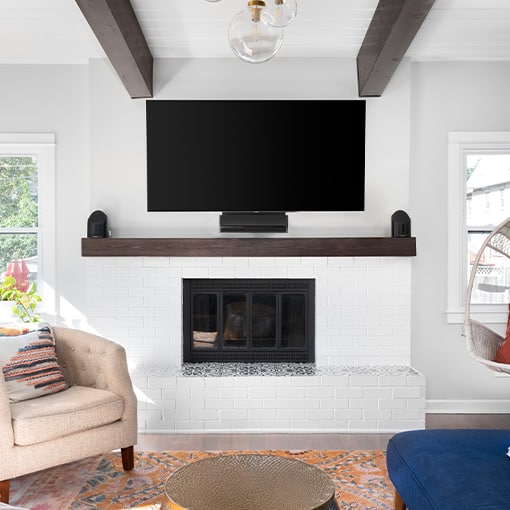
Can I Mount My Tv Above The Fireplace

Can I Mount My Tv Above The Fireplace

How To Mount A Tv Over Brick Fireplace And Hide The Wires Designing Vibes Interior Design Diy Lifestyle

Brick Fireplace Designs Photos Tv Mount Onto Integrity Building Gallery Wall

The Ultimate Guide To Mounting Your Tv Over Fireplace 4 Easy Steps Patriot Chimney

Mounting A Tv Above Fireplace With Full Tutorial Fixthisbuildthat

